Chinese food and Japanese food may sound and look similar at first glance. They are both types of Asian cuisine, so there will be some similarities. However, there are many differences in how the types of food are prepared, and consumed, and in their nutritional values.
In this article, those differences will be explored so that it is clear which cuisine features which components. For someone who has never really delved into Japanese food before but has fallen victim to Chinese food’s convenience on late nights, trying new things can be scary. The best way to explore foods from new cultures is to start from a base that you know you enjoy. (Check it out: Chinese Food vs Thai Food)
Different Preparations and Cooking Techniques
The differences start early for these types of cuisine, and it all comes down to the cookware and the utensils. Some major differences you’ll notice between Chinese and Japanese food are:
- The knifework
- The frying technique
- The way dishes are plated
For at-home Asian-inspired cooking, the correct cookware is integral to the success of the dish. Different techniques will impact both the flavor and the texture of your food.
Japanese Food
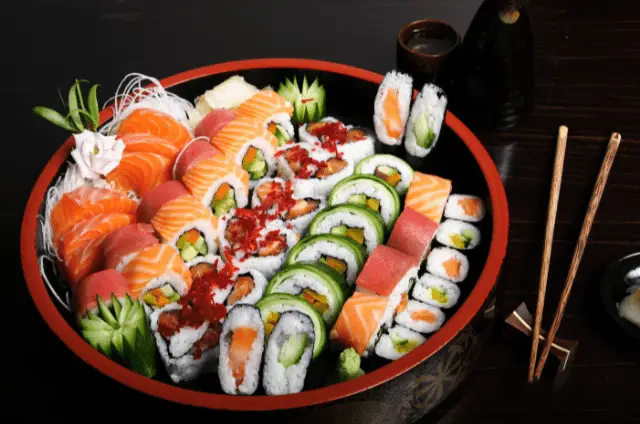
The Japanese tend to lean very heavily into knife skills when cooking. A good example of this is sushi; the raw fish is sliced thinly so that it is easy to eat and drapes easily onto the roll or is finely chopped enough to fit inside.
Knife skills are also important for hibachi, which is a grilling technique that has been mastered by the Japanese. Hibachi involves cooking food on a flat top grill. Usually, the grill is cast iron, but some hibachi grills have stainless steel flat tops instead. Everything is usually chopped beforehand into small, diced pieces.
Japanese and Chinese restaurants both carry fried foods, but Japanese food is typically fried in a deep fryer. This gives it a bit of a deeper flavor and sometimes a deeper color but does not profoundly impact the overall flavor of the dish. Japanese cuisine also involves a lot of soups, skewers, and even curry.
Components of Japanese food are usually served separately rather than all mixed together. For example, if you go to a Chinese restaurant, they might put your orange chicken on top of your rice. Most Japanese restaurants, however, serve the meat/protein of the meal separately from the starch.
Knives
One item that is absolutely unforgettable when thinking about the differences between Chinese and Japanese food is the knife. Japanese cooking includes several standard knives, such as:
- The santoku. A santoku is a straight-bladed knife with a rounded edge. They are available in several sizes. The santoku is primarily used for thinly slicing delicate proteins like fish for sushi since it has small, oval-shaped indents along the blade to keep the food from sticking. However, you could use this knife for a variety of other foods.
- The nakiri. The nakiri is used primarily to chop vegetables. The shape is rectangular and straight-edged all the way around, similar to a meat cleaver. These knives are good for chopping large quantities of vegetables at once due to the length of the blade.
Chinese Food
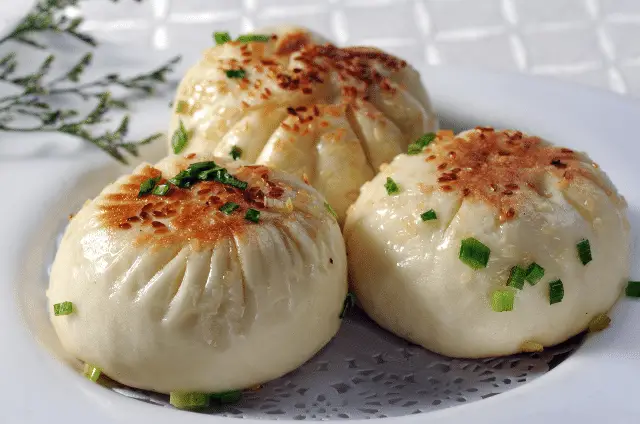
Chinese food is less focused on precise cuts, mostly because they use less exotic (and therefore less expensive) meats, like pork, beef, and chicken. If you’ve ever looked into a pint of lo mein or a container of orange chicken, you’ve probably noticed that the meat is in chunks, and sometimes breaded and fried. These cuts are typically achieved using a standard cleaver or chef’s knife.
Food prepared in Chinese restaurants is still fried, but it gets pan-fried in a deep non-stick coated pan called a wok. Woks are used for everything from stir-frying rice and vegetables to cooking meat and lo mein noodles, kind of like a hibachi is a catch-all for Japanese cuisine.
Not deep frying food like they do in Japanese dishes allows for a little more depth of flavor since vegetables are able to be cooked right in with the rest of the food. Since the food endures a bit of a lighter fry, it also stays lighter in color and less greasy overall.
Why do Cookware and Utensils Matter?
Cookware matters very much for the actual flavor of the food. Chinese has a saltier, typically more onion-y flavor that can only be achieved by pan-frying the onion pieces with the rest of the dish. Japanese food, however, cooks the vegetables separately on a flat top grill, not allowing for peak caramelization and keeping the flavor fresher and lighter, which contrasts more with the rich, fried flavor of the rice.
Utensils don’t matter a ton in Chinese dishes; you can totally get by just fine with a cleaver or even a hefty chef’s knife. However, if you’re looking for the pristine, precise cuts of exotic meat in your Japanese dish, you’ll need something like a santoku to prevent breakage. (Check it out: American Chinese Food VS Authentic Chinese Food)
Bases
Bases are important in all types of cuisine. And, regardless of the area, the bases for standard dishes are usually starch. Chinese and Japanese cuisine is no exception. The most common bases for most Asian inspired dishes include:
- Noodles
- Rice
Noodles and rice are filling and come in various thicknesses and lengths to complement a variety of dishes. In both types of cuisine, noodles and rice are used in both traditional fried dishes and soups.
Chinese Food
Though noodles are common in Chinese food, they usually only appear in a few different forms: lo mein and ramen. Ramen can be found in both places, it originates from China and is imported to Japan. Both lo mein and ramen are thin noodles that are almost always served with vegetables and some kind of protein. The most common proteins are beef and pork, though shrimp is offered at some restaurants as well.
Lo mein and ramen can and typically are stir-fried in a wok with vegetables mixed in. Then, meat is added after cooking in a separate wok. Ramen is served in a broth with toppings that include soft boiled/fried eggs, bean sprouts, and fresh scallions. Lo mein lacks these fresh toppings, but the dish does have those stir-fried vegetables and protein added in when it is cooking.
Fried rice is not as versatile in how it’s prepared: the rice is pan-fried in a wok, protein is added, and there’s usually some onion. Unless you get vegetable fried rice specifically—which will typically include onions, peas, and carrots—your fried rice is not guaranteed to contain any real source of vegetables, hence why it is the most common base dish for Chinese cuisine.
Japanese Food
Japanese food focuses a bit more heavily on noodles. There are a plethora of different types, including:
- Ramen: a thin, curvy noodle used for soups
- Udon: a thick and chewy noodle that can be used for standalone noodle dishes and soups
- Yakisoba: a medium noodle, about the same thickness as a lo mein noodle, typically used for stir fry dishes
- Rice noodle: a thin, gluten-free noodle that is perfect for soups and fried dishes
Japanese dishes tend to be more focused on sauces. For example, yakisoba noodles have a special sauce that contains ketchup, soy sauce, and a few other ingredients. These noodles are either stir-fried in the sauce after cooking or the sauce is served in a bowl on the side and the consumer dips the noodle as they like. The same is true for other Japanese dishes, whereas Chinese noodle consumption is straightforward.
Flavor Choices
The flavors of the food are where the most noticeable and most important differences lie. The main differences between the two are:
- Freshness
- Use of herbs
- General flavor palette
- Frying technique
- Spiciness
# Japanese Food
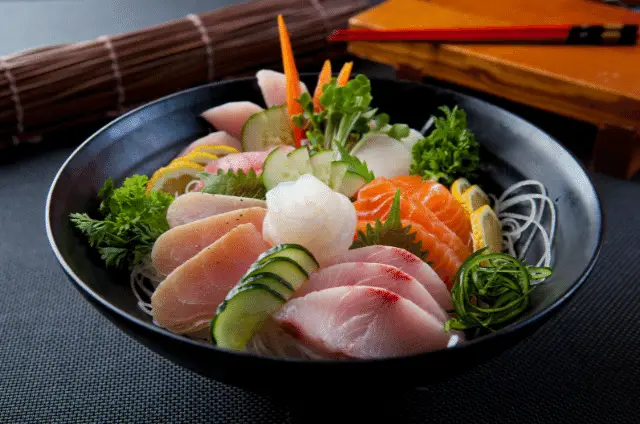
Japanese food is not spicy in most cases. The only dish that is really ever made to be spicy is Japanese curry, and even then, they offer mild options as well. Instead of focusing on spice and chilis for flavor, Japanese cuisine strives to create a sweeter or more umami-type flavor.
Umami is a Japanese word that translates to, “a pleasant savory taste.” This rings true for many Japanese dishes; soups especially are meant to be salty, warm, and comforting. The base for these soups is usually a light stock just meant to accentuate the flavors.
Japanese food also leans more toward fish and seafood in general, like using fish sauce in stir-fries and using fish heads to make stock.
# Chinese Food
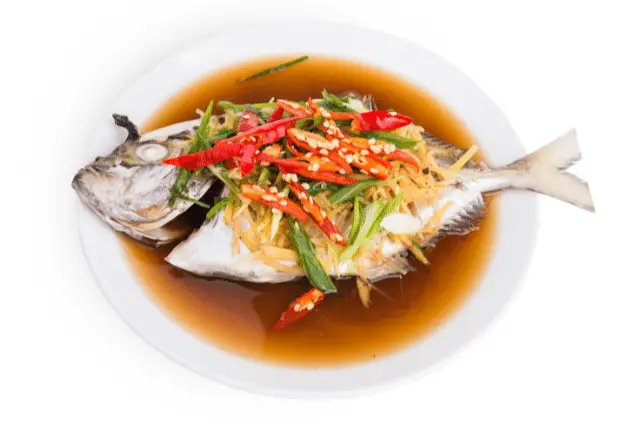
The Chinese don’t shy away from spices. The majority of their foods contain multiple herbs and spices. As a result, you can expect their foods to be more flavorful compared to Japanese food. One of the Chinese favorite spices is garlic. The majority of their dishes call for this ingredient, which is very rare in Japanese food.
Not to mention, the concept of Umami is not as popular among the Chinese. Chinese foods are too empowering to the taste buds compared to Japanese food.
Meat Choices
Another difference between Japanese and Chinese food is the choice of entrees. The main differences between the two are: (Check it out: What kind of meat does Chinese Food Restaurant Use)
- The types of meats preferred
- Preparation
Japanese Food
The Japanese have a liking for fresh seafood, which makes their foods a healthier choice than Chinese food. In most cases, you’ll find that they substitute pork with fish. Not to mention, they often serve their meats raw. Some of the popular raw Japanese foods include uni, sushi, and sashimi.
However, seafood is not the only entrée you’ll find in Japanese foods. They also have a liking for chicken and beef, although these are not as popular in their dishes.
Chinese Food
The Chinese, on the other hand, don’t discriminate. They include all sorts of meats in their dishes from pork and chicken to fish and beef. And unlike the Japanese, they often cook their meats and rarely incorporate raw ingredients.
The only raw ingredients you’ll find in Chinese dishes are spices. They tend to add a lot of raw garlic and onions to their foods to infuse more flavors.
Proper Ways of Consumption
One of the things that make it easy to confuse Japanese and Chinese food is the choice of utensils. Both cultures prefer to use chopsticks. However, there are a plethora of differences in their ways of consumption that have nothing to do with their utensils. Let’s take a closer look.
# Chinese Food
The Chinese place a lot of importance on table manners and adherence to their customs while eating. Therefore, if you’re planning to visit the country or you want to uphold these customs the next time you’re dining at a Chinese restaurant, keep the following in mind.
- Allow your elders to eat first: No one at the table is supposed to eat unless they get a signal from the older people. This can be something as simple as the person saying, “Let’s eat.”
- Always pick up your bowl: You’re supposed to eat the meal while the bowl is raised from the table and in your hand. Bending down to the table to take a bite is considered bad table manners among the Chinese. They also believe that doing so restricts your digestion.
- Take food from the plates closest to you: If there are multiple food servings on the table, begin by serving from the dishes closest to you. Reaching out to dishes far from you is bad manners in Chinese culture.
- Don’t dig for treasure: It’s also bad manners to dig for the best piece of meat or other foods while serving. You should be considerate of others and serve without digging and turning the food.
- Take your time: Don’t gobble down food greedily even if it’s your favorite food. Take your time to chew and swallow. And if you want to have seconds, consult other members at the table before doing so.
- Avoid distractions: You shouldn’t be on your phone, reading, or doing any other activity when it’s time to do it. Concentrate on your food and your companions until mealtime is over.
- Chew with your mouth closed: This is not only a sign of good table etiquette but also good for your digestion. You’re also not supposed to make loud noises with your mouth while eating Chinese Food.
- Use a napkin: Don’t lick food off your mouth or face. Use the napkins provided at the table.
- Express gratitude: Whether it’s in a restaurant or someone’s home, always say thank you after you’ve been served and after the meal.
- Use a handkerchief to sneeze or cough: If you have to take something out of your mouth, you’re expected to leave the table and do so.
- Use chopsticks correctly: Don’t wave them, use them to poke your food, or stack them vertically into your food when you’re done.
# Japanese Food
Similar to the Chinese, the Japanese utensil of choice is chopsticks. However, unlike the Chinese, they rarely incorporate knives and forks into their utensils. The Japanese are also very strict when it comes to table manners. Some of the things you should keep in mind while dining with the Japanese include:
- Begin by saying itadakimasu: It’s customary to begin all Japanese meals with this phrase. It means “to humbly receive.” It shows that you’re grateful for the food in front of you and displays your table etiquette.
- Eat rice correctly: Lift the bowl at a distance that will make it easy to catch any rice that falls but not too close to your mouth. You’re also not allowed to season the rice with wet ingredients like soy sauce. However, you can add dried ingredients.
- Eat soup ingredients correctly: While taking soup, the bowl should also be lifted closer to your mouth as you would for rice. You’re also expected to use chopsticks to eat your soup because spoons are not provided. To do this, use the chopsticks to eat the dried ingredients and drink the soup right from the bowl using both hands.
- Serve from the top or back of your chopsticks: If the dishes are served family-style (in one large bowl), you’ll need to use your chopsticks to serve yourself. Use the top or back part to avoid the germs from your mouth from contaminating the rest of the food.
- Dip your raw dishes instead of pouring: A small dish of soy sauce and wasabi will be provided for small dishes. You should dip the meat into the sauce instead of pouring it. Also, don’t lift the small dish from the table.
- Use the provided towel to clean your hands: This is a crucial step when you’re eating raw meats like nigiri sushi which are commonly eaten without any utensils.
- Slurp the noodles away: The Japanese don’t shy away from slurping their noodles. This food often contains some broth so it’s inevitable. You’re allowed to eat without lifting the bowl off the table.
- Mind proper placement of chopsticks: If you want to pause eating or you’re done, place the chopsticks on the chopstick rest provided. If none is provided, place the chopsticks neatly together across your plate or bowl.
- Say gochisou-sama: This translates to “thank you for this delicious meal.” You should say it at the end of your meal to express gratitude and communicate that you’re full and done with your meal.
Source: The Spruce Eats
Nutritional Value
Another way Japanese and Chinese foods differ is in their nutritional value. There’s no doubt that both foods give your taste buds a unique treat. However, have you ever stopped to wonder which of these foods is healthier?
Due to their preparation and choice of ingredients, Chinese and Japanese foods have vast differences in their nutritional value, with Japanese food being considered the healthier option. Here’s why:
Japanese Food Mainly Includes Seafood
As we’ve mentioned, the Japanese prefer to have seafood entrees. Fish is not only known to be rich in good fats but also has fewer calories compared to pork and beef. The only concern about seafood is the mercury levels in it. However, it’s generally a healthier option compared to other meats.
The Japanese Use Traditional Methods of Food Preparation
Another factor that makes Japanese food more nutritious is its methods of preparation. For most of their meals, the Japanese use a flat pan, which is capable of preparing foods at high temperatures without the loss of nutrients.
Furthermore, the Japanese don’t add too much oil when preparing food. The Chinese, on the other hand, use a wok which requires turning off the ingredients and cooking them longer. In the process, important food nutrients are lost. What’s more, they add a lot of oil to their foods.
Japanese Foods Include Numerous Fermented Products
The Japanese also add a lot of fermented products to their foods. These are beneficial in increasing beneficial flora in the digestive tract. Some of their popular fermented foods include rice malt, koji, and miso. These are available in most Japanese restaurants around the world.
The Japanese Mostly Serve their Food Raw
Another factor that makes Japanese food the more nutritious option is the fact that they mostly serve their foods raw. Doing so makes it less likely for important nutrients to be lost during the preparation. As a result, you get more nutrients from Japanese food compared to Chinese food.
Source: Sumi Robatabar
Are There Any Similarities?
Despite their many differences, Japanese and Chinese cuisine share certain similarities. In fact, these similarities are what make it difficult for some people to differentiate between the two foods. Some of them include:
# A Love for Meats
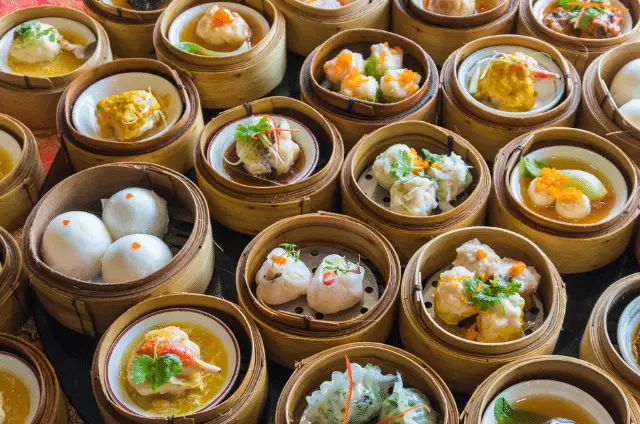
You’ll be hard-pressed to find a Japanese or Chinese dish that doesn’t include some type of meat. The entire course must include fish, pork, chicken, or beef stew.
# Noodles and Rice Never Miss

Other favorite dishes among the Japanese and Chinese are noodles and rice. Whether you’re eating at a Japanese or Chinese restaurant or visiting the countries, you can rest assured you won’t leave without having either of these two meals.
# Use of Fresh Ingredients
Both cultures also rely heavily on fresh ingredients. Whether it’s the spices or meats, they always use fresh farm produce and get fresh meat cuts. As a result, Japanese and Chinese foods always taste incredible because all the fresh flavors and nutrients are still present in the foods.
# A Love for Soy Sauce and Tofu

Japanese and Chinese foods are not complete without soy sauce or tofu. These are always served in a separate dish to dip meats. The sauces may have different ingredients and methods of preparation, but they are never missed in these Asian cuisines.
# Strict Observance of Culture
Both Asian cultures are also very strict when it comes to observing their culture during meals. They never substitute the use of chopsticks for other utensils even if it would make it more convenient for their visitors.
What’s more, they observe excellent table manners. From saying thanks to how they eat their food, you can tell they are cultured individuals.
Source: Bite My Bun
Which One is Better?
Ultimately, your choice between Japanese and Chinese food will depend on your tastes and preferences. If you love flavorful dishes, Chinese food is the way to go. The Chinese use a lot of ingredients in their foods, and they top these up with a variety of herbs and spices. As a result, the dishes always give a unique taste.
What’s more, they use oils and different preparation methods in their foods, which further bring out different tastes. Japanese foods are different. The Japanese don’t use too much oil or ingredients in their foods. In fact, they like to serve their foods raw, and those that require cooking are only cooked for a short time.
Japanese foods are best for individuals who prefer their ingredients served separately. You’d also enjoy Japanese food if you’re watching your weight. They tend to have fewer calories, and the fact that most use seafood makes them even better. However, if you’ve not tried either of these, it wouldn’t hurt to try them both to decide.
Give Your Taste Buds a Treat
If you’ve been thinking about trying Asian cuisine and you’re racking your brain between Japanese and Chinese food, now you know the difference between the two. If you’ve never had any of these foods, you may be forgiven to think there are no differences between them. They use the same utensils, are often served in a similar manner, and contain rice or tofu.
But as you have seen, there are multiple differences between these dishes. Because of their methods of preparation and preference for ingredients, they taste different and have varying nutritional values. Not to mention, both cultures have a set of rules on how you’re supposed to behave at the table.
So, now that you know what to expect, you’re better equipped to make the right choice. We recommend trying both cuisines. They both offer unique tastes. Not to mention, you get to appreciate different cultures. So savor every bite.
